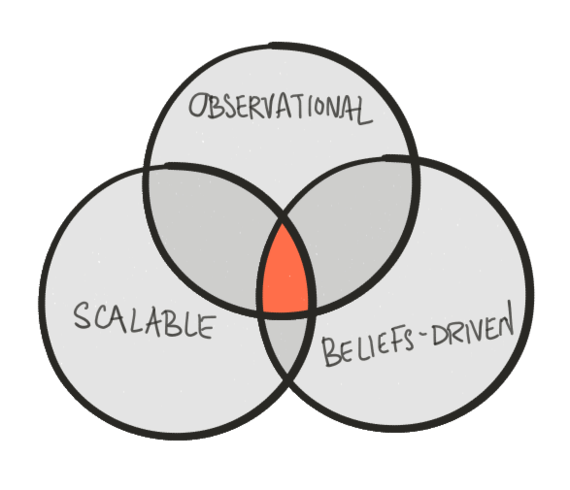I recently had an uninvited guest stay with me. He was small. He was furry. And despite his cute little whiskers and love of cheese, my wife and I very much wanted him out of our house. I thought it would simply be a matter of laying down some mouse traps. I was wrong. The problem, as explained to me by the exterminator, was that our mouse was so domesticated he had developed an incredible ability to identify and avoid traditional traps. It took the exterminator 12 days, and an approach he had never tried before to catch him. It made me realize... we are facing a similar problem with traditional research.
There is much discussion and debate today, as traditional research methods like focus groups, polls and surveys struggle to deliver the accuracy, clarity and actionability that organizations require. I think I know why. People, like my furry little house guest, have learned how to spot the 'traps' researchers have been using for the past 50 years and they have learned how to outsmart them.
As consumers, we have no desire to be interrupted from our daily lives to answer questions online or over the phone. And for those few subjects who do get lured into that occasional focus group, we are expecting a lot if we believe these people will share their deepest and sometimes darkest desires in front of a room full of strangers. Sure, these people may tell a moderator what they do. But a focus group or survey will always struggle to get to why they do it.
As a result, the organizations that hire research firms to help them solve business challenges end up having to work with incomplete and very rational information. You will know where someone goes, what they do, what time they do it... but you won't know why? It all comes down to the why? Without it, a company can't feel confident that the insights they have access to is any different from what most of their competition also has.
Traditional research serves only as a mechanism to level the playing field. Nothing more.
There was a time when research delivered a competitive advantage. That time is gone. Because everyone uses the same tools, the same panels, the same survey channels, the same analysts, the same home visits and they all yield the same results.
This is why the research industry is in desperate need of disruption.
And the solution lies at the intersection of three magical words.
Let me explain.
Observational: We need to stop asking consumers why they make the decisions they make because as human beings, we are incapable of articulating the emotion behind our decisions when asked. It's biology. To circumvent this problem, we need to adopt observational methods where trained eyes (typically trained sociologists and cultural anthropologists) are able to discern meaning in the things people do without having to ask them. Interestingly enough, such methods have existed for a long time (known commonly as ethnographic research). But have lacked the scale - typically observational research involves at the most, a few hundred people. Which brings me to my next point.
Scalable: Research has to scale and allow us to examine thousands of people in a given geography (think country, state, even cities, towns and communities). It is only then that we can allow organizations to truly understand people and how their motivations differ from one place to another. Better yet, scale is the only way we can also begin to identify emerging trends in consumer culture, before they hit the mainstream.
Beliefs-driven: For decades, research has segmented people based on their age, income, lifestyle and more. We still continue to talk about "Millennials" and "Gen Xers" as if their age alone makes them share the same beliefs, values, affiliations and behaviors. The reality is that in today's hyper connected world, it doesn't matter how old one is. What matters is what one believes in, and whether one shares those very beliefs with thousands of other people. Because understanding people's underlying beliefs is the path to uncovering their real motivations.
The future in market research will belong to those who'll figure out how to sit at this intersection point. These are the ingredients needed, for us to build a better mouse trap. With it, we will deliver an understanding of consumers, voters and culture itself, that will shine a light on the 'why' that eludes our clients. This disruption is needed. It will bring clarity back. And with it the competitive advantage our clients deserve.

